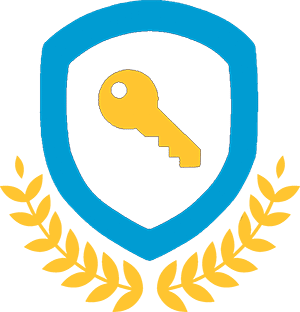Free Copy of Earning Freedom
Introduction
Ilya Lichtenstein and his wife, Heather Morgan, have pleaded not guilty to federal charges of conspiracy to commit money laundering and conspiracy to defraud the United States.
Part 1 covers the details of the 2016 cryptocurrency hack that led to their recent arrests in New York. It also covers the details of their actual charges and possible penalties. See below to read Part 1:
The story of their case and the federal government’s dogged pursuit continues below.
Agencies Leading the Investigation
For such a massive case, the list of agencies leading the investigation supplied by the DOJ at its initial press conference is surprisingly short.
According to the DOJ, the investigation so far was led by the following two agencies:
- Internal Revenue Service-Criminal Investigations, Washington, DC Field Office’s Cyber Crimes Unit;
- FBI’s Chicago Field Office, and
- HSI-New York.
The Ansbach Police Department in Germany assisted in the investigation.
What Went Wrong?
In plain sight, Morgan and Lichenstein hid in New York for over 5 years.
There is no doubt that Morgan and Lichtenstein used some of the best techniques available for crypto laundering. Peel chains, mixing and tumbling, and chain hopping techniques are used thousands of times a day without consequence.
Still, despite their sophisticated techniques, the bottom line remains that cryptocurrency is immutable and traceable. Following the money, or Bitcoin is still a trusted federal law enforcement strategy.
So, how did the defendants’ luck run out?
From reading the government’s filings in the criminal case, including the factual affidavit, one of the things that helped law enforcement is that with the passage of time, the defendants became trapped. Most of the original bitcoin was blacklisted on many exchanges, making it harder to move out of the original wallet. Doors that might have been available earlier for money laundering became shut.
Among the law enforcement tools that helped curtail their ability to continue laundering are the federal anti-money laundering KYC rules or “know your customer” rules.
What does KYC mean?
Know Your Customer rules protect financial institutions and the federal government against fraud, corruption, money laundering, and terrorist financing. They include: verifying customer identity, knowing their activities, accepting only legitimate funds, and looking out for money laundering.
Trapped as they found themselves, defendants Lichenstein and Morgan got sloppy and did not keep their real identities away from accounts handling the stolen coins. For example, they used a real driver’s license to verify their identity on one exchange and used their own home address for trading gold with the stolen bitcoin. They also cashed out some money laundering proceeds for prepaid gift cards, which helped investigators.
The size of their haul also became an albatross. As we have pointed out throughout this cryptocurrency series, the techniques that help disguise the provenance of stolen virtual coins can become harder to execute for vast sums of money. Though there are still exchanges in lax jurisdictions willing to help people cash out large amounts of crypto with no questions asked, the federal government is working to make those opportunities difficult.
Computer files listing the addresses of wallets containing stolen bitcoin and the associated private keys were a big help for law enforcement, further tying the defendants to the crimes.
Finally, many crypto experts believe that the 2017 seizure of computers from the Alpha Bay exchange likely helped law enforcement trace complicated laundering transactions back to the original wallet of stolen bitcoins controlled by the defendants. That is robust evidence connecting them to the conspiracy.
The DOJ Takes A Bow: “Crypto is not a safe haven for criminal” Activity
First, it bears repeating: an indictment is not a conviction, and the federal government must prove its charges against all criminal defendants, including Morgan and Lichtenstein, beyond a reasonable doubt. A criminal complaint is merely an allegation, and all defendants are presumed innocent until proven guilty.
That said, in the wake of Morgan’s and Lichtenstein’s arrests, the DOJ took an initial bow touting this as their largest financial seizure ever!
“Today’s arrests, and the department’s largest financial seizure ever, show that cryptocurrency is not a safe haven for criminals,” said Deputy Attorney General Lisa Monaco at a press conference.
“In a futile effort to maintain digital anonymity, the defendants laundered stolen funds through a labyrinth of cryptocurrency transactions. Thanks to the meticulous work of law enforcement, the department once again showed how it can and will follow the money, no matter what form it takes.”
Federal law enforcement demonstrated with these arrests that the strategy to follow the money through the blockchain or wherever can still work. The DOJ says it refuses to allow “cryptocurrency to be a safe haven for money laundering or a zone of lawlessness within our financial system.”
To make an example of them and deter others, the DOJ will aggressively prosecute Lichtenstein’s and Morgan’s conspiracy to launder the proceeds of about 120,000 stolen bitcoins from Bitfinex’s platform and to defraud the US.
Over the last five years, federal law enforcement has gathered evidence that the defendants moved approximately 25,000 of the 120,000 stolen bitcoin out of the original digital wallet via a complicated money transfer process. At the end of the convoluted process (chain hopping, mixing and tumbling, layering, peel chains, etc.), proceeds from stolen crypto found themselves in various financial accounts controlled by Lichtenstein and Morgan.
No one else has been associated with the 2016 hack or the stolen Bitcoin to date.
The remainder of the stolen funds, comprising more than 94,000 bitcoin, remained in the original wallet containing the illegal proceeds from the hack. Law enforcement used court-authorized search warrants of online accounts controlled by Lichtenstein and Morgan to access the defendants’ files.
In defendants’ files, they found the private keys required to access the original digital wallet that directly received the stolen Bitcoin. That is how the federal government then executed its largest cryptocurrency seizure in history: over 94,000 bitcoin valued at over $3.6 billion at the time of seizure.
Morgan and Lichtenstein employed numerous sophisticated laundering techniques, which according to the DOJ filings, included:
- using fictitious identities to set up online accounts;
- utilizing computer programs to automate transactions, a laundering technique that allows for many transactions to take place in a short period of time;
- depositing the stolen funds into accounts at a variety of virtual currency exchanges and darknet markets and then withdrawing the funds, which muddies the trail of the transaction history by breaking up the fund flow;
- converting bitcoin to other forms of virtual currency, including anonymity-enhanced virtual currency, or “chain hopping”;
- and using U.S.-based business accounts to legitimize their banking activity.
The government counts on the fact that people always leave tracks. In this case, they boast that the FBI has the tools to follow the digital trail, wherever it may lead.
CONCLUSION
In this case of a $5 Billion crypto hack, including fraud and money laundering, the government gets to boast of 2 things. First, it can follow the trail of cryptocurrency just as it can any other money trail. Second, they count on criminal actors always leaving tracks. They are doggedly determined to follow potential criminal activity in the crypto space no matter what it takes. DOJ says it stands ready to confront the threats posed by people like Morgan and LIchesntein using 21st-century investigative techniques to recover stolen funds and hold perpetrators accountable.
As they boasted in this case, “we’re able to uncover the source of even the most sophisticated schemes and bring justice to those who try to exploit the security of our financial infrastructure.”

